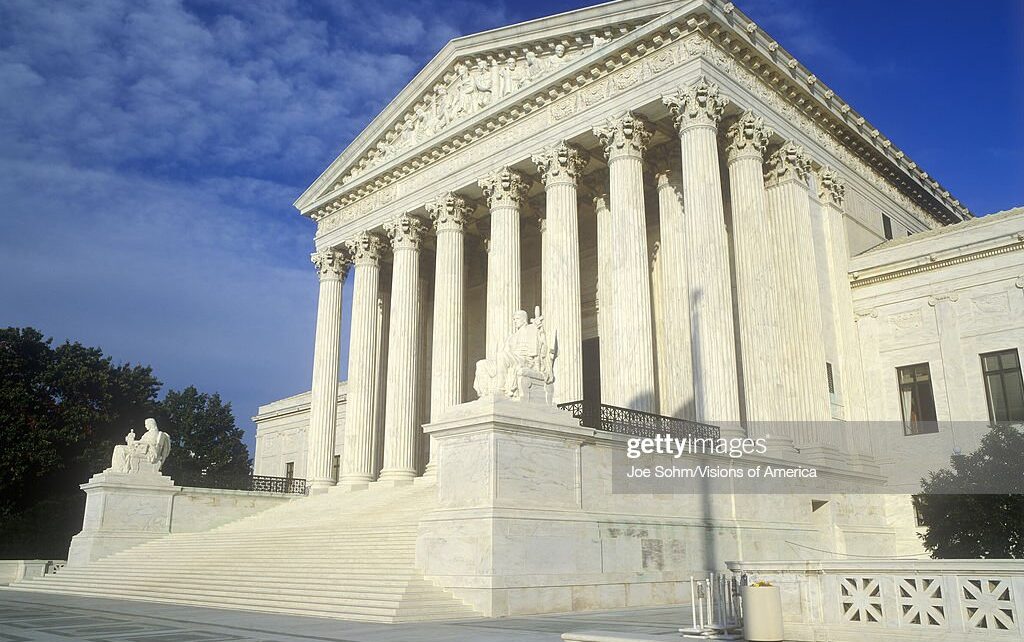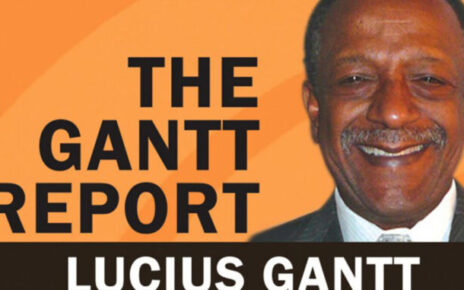Supreme Court Rules on Private Prison Liability Inmates at private and government-run prisons should have same rights
The Court noted that inmates in state facilities operated by private companies do enjoy the right to sue operators. In order for this right to be extended to federal inmates, the Court called on Congress to act and write new law.
Congress should act. Inmates in federal private facilities should have the same protections and rights as inmates in state private facilities. In addition, Congress should review the current liability laws and eliminate many of the protections federal and state officials enjoy. Doing so will provide the strongest protection of inmate civil rights.
Simply because inmates serve out their sentences in different types of facilities, i.e., public and private, they should not have different protections and rights.
Presented below is a brief summary of relevant judicial actions in an attempt to illuminate the issue and promote a broader understanding of the issues at hand.
Case History
| Richardson v. McKnight, 521 U.S. 410 (1997) |
| In Richardson v. McKnight, a prison inmate sued two guards at a prison in Tennessee that had been privatized. The plaintiff alleged that the guards had deprived him of a right secured by the Constitution. Hence, the plaintiff alleged, the guards were liable to him under 42 U.S.C. Section 1983.
Justice Breyer delivered the opinion of the court and noted several distinctions between government and private agents. He noted that government agents typically work within civil service rules that provide them some security and “may limit the ability to punish individual employees.” However, firms in the marketplace face pressures to encourage sound decisionmaking. Also, firms do not have to contend with civil service restrictions-thus they can use inducements (carrots and sticks) to motivate employees. Thus, immunity would not improve the quality of decisions made by firms and agents. Justice Scalia wrote the dissent. He argued that immunity should be granted on the basis of function, not public or private status. The dissenters believed that whenever private actors “stand so far in the place of the State and exercise its political authority and do not act in any private capacity,” they should enjoy the same immunity as state actors. Ultimately, in Richardson the Supreme Court held that employees of private firms could not invoke the immunity defense available to state government actors. The Court recognized that the incentive structure differs between government and private providers. They noted that private firms seek to maximize profits-which involves minimizing costs. Without meaningful oversight, the court argued that firms might engage in harmful activity to either increase revenue or lower the costs. Thus, liability rules are necessary to discourage such behavior. However, government actors do not have these pressures, and are not subject to potential negative externalities. The Court assumes that government actors act in the public’s best interest; thus, to ensure that the public’s interest is properly carried out immunity should be granted. |
On November 27th the U.S. Supreme Court refused to hold corporations under contract with the federal government liable for constitutional violations in Correctional Service Corporation v. Malesko 122 S.Ct. 515 (2001). The case involved a federal inmate and a private contractor with the U.S. Bureau of Prisons (BOP).
Malesko, the inmate was housed on the fifth floor of the Le Marquis Community Correctional Center, a halfway house operated by Correctional Service Corporation (CSC). A CSC policy required inmates that lived below the sixth floor to use the stairs to reach their rooms. Malesko was exempted from this policy because he suffered from a heart condition limiting his ability to climb stairs.
But when a CSC employee forbade respondent to use the elevator, he was forced to use the stairs, had a heart attack, and fell.
The District Court treated the complaint as raising a “cruel and unusual punishment” (Eight Amendment) claim under Bivens v. Six Unknown Federal Narcotics Agents, 403 U.S. 388 (1971), in which the Court recognized “an implied private action for damages against federal officers alleged to have violated a citizen’s constitutional rights.” In dismissing the suit the district court, relied on the Supreme Court’s decision in FDIC v. Meyer, 510 U.S. 471 (1996)-“a Bivens action may only be maintained against an individual” and thus cannot be brought against a corporation.
The U.S. Court of Appeals for the Second Circuit reversed this decision in part citing that while Bivens applied to federal agents and not to federal agencies (via Meyer), it should be extended to private entities to “accomplish the important Bivens goal of providing a remedy for constitutional violations.”
Chief Justice Rehnquist delivered the opinion of the court:
The main issue the court has to determine is whether Bivens “should be extended to allow recovery against a private corporation operating a halfway house under contract with the Bureau of Prisons.”
Malesko asks the court to extend the limited holding of Bivens to give a right of action against private companies acting under color of federal law. He argues that this extension would further deter the unconstitutional acts of individuals, and give companies an added incentive to prevent the violations.
In both Davis v. Passman, 442 U.S. 228 (1979), and Carlson v. Green, 446 U.S. 14 (1980), the court applied the core holding of Bivens. In Davis, a new right of action was extended because the plaintiff lacked any other remedy-it was “damages or nothing.” In Carlson, the court inferred a right of action against individual prison officials where the plaintiff’s only alternative was a Federal Tort Claims Act (FTCA) claim against the United States. However, the threat of suit against the United States is insufficient to deter unconstitutional acts of individuals-since the Bivens remedy is recoverable against individuals, it is more effective than the FTCA remedy. The court also found it “crystal clear” that Congress intended FTCA and Bivens to serve as “parallel” and “complementary” sources of liability.
The Court has consistently struck down any attempts to extend Bivens post-Carlson, noting that in most cases Congress has appropriately provided meaningful redress while proving competence in crafting relief. “Congress is in a far better position than a court to evaluate the impact of a new species of litigation between federal employees.”
Most recently, in FDIC v. Meyer, the Court unanimously declined to extend Bivens to permit suits against federal agencies, in this case the Federal Deposit Insurance Corporation. “The purpose of Bivens is to deter the officer,” not the agency. The Court reasoned that given the choice, plaintiffs would sue a federal agency instead of an individual, since individuals generally have a qualified immunity defense under Bivens; permitting suits against federal agencies would virtually eliminate suites against individual officers of the kind authorized in Bivens; rather than extending Bivens protection. Such a move would eviscerate it and replace it with an entirely different cause of action.
The Court concludes that Malesko’s claim is fundamentally different from any other application of Bivens.
Again, the purpose of Bivens is to deter individual federal officers from committing constitutional violations. In Meyer, the court noted that threats against agencies did not carry the same type of deterrence. “If we were to imply a damages action directly against federal agencies…there would be no reason for aggrieved parties to bring damages actions against individual officers. The deterrent effects of the Bivens remedy would be lost.”
Malesko claims that his action, even under Meyer, advances the core deterrence purpose of Bivens. Because “corporations respond to market pressures and make decisions without regard to constitutional obligations, requiring payment for the constitutional harms they commit is the best way to discourage future harms.” Even if that is true, it has no relevance to Bivens, which is concerned solely with deterring the unconstitutional acts of individual officers. “If deterring the conduct of a policymaking entity was the purpose of Bivens, then Meyer would have implied a damages remedy against the Federal Deposit Insurance Corporation.” However, Bivens is not based on the premise of checking the policymaking entity or agency but rather deters individual officers who commit unconstitutional acts.
Furthermore, there is no reason to extend Bivens to include this remedy. No federal prisoners enjoy this remedy-if a prisoner in a BOP facility alleges a constitutional deprivation, his only course of action is against the offending individual officer (subject to the defense of qualified immunity). The prisoner cannot bring a Bivens claim against the officers employer-the United States or the BOP. Again, his only remedy lies against the individual. “Whether it makes sense to impose asymmetrical liability costs on private prison facilities alone is a question for Congress, not us, to decide.”
Justice Stevens argues that this ruling puts the constitutional rights of tens of thousands of inmates in jeopardy citing several cases of inmate abuse at private facilities and Legal Aid Society of New York’s and the American Civil Liberties Union Amicus briefs. In all but one of these cases, the private facility in question housed state inmates. These inmates already enjoy a right of action against private correctional providers under 42 U.S.C. Section 1983. If Malesko’s claim were true, then the added deterrence provided by Section 1983 right of action would result in fewer claims, where Congress already provides for such liability. “That the trend appears to be just the opposite is not surprising given the BOP’s oversight and monitoring of its private contract facilities.”
In sum, the respondent seeks an extension of Bivens. The Court concludes that the extension will not advance Bivens’ core purpose of deterring individual officers from violating prisoners’ constitutional rights. Therefore, the judgment of the Court of Appeals is reversed.
Justices Scalia and Thomas concurring.
Justices Scalia and Thomas join the opinion of the court because they agree with the narrow interpretation of the rationale and application of Bivens. While a broad reading of Bivens, such as the dissent’s, may well produce a result in Malesko’s favor, such a broad reading would be unwarranted because Bivens itself was wrongly decided. Bivens is “a relic of the heady days” of judicial activism in which the Court overzealously created new causes of action; and that case, together with its follow-up cases, should not be used as precedent beyond the precise circumstances of those cases.
Stevens, Souter, Ginsberg, and Breyer dissenting.
Stevens suggests that the violation in question was committed by a federal agent-a private corporation employed by the BOP to perform functions that would otherwise be performed by individual employees of the federal government. Thus the real question is whether to create an exception to Bivens and Carlson, not whether it should extend to cases beyond their “core premise.” Before Meyer, the Courts of Appeals had held that corporate agents performing federal functions, like human agents doing so, were proper defendants in Bivens actions. Essentially, they stated that the company is the agent, not the employees of the company.
In Meyer, the court drew a distinction between “federal agents” and “an agency of the Federal Government.” The court did not discuss private corporations as agents-nor did the court suggest that these agents (corporate agents) be viewed any differently than human agents-“corporate agents should not be treated more favorably than human agents.” Thus, the company should be held liable in this case.
The Court claims that an extension of Bivens would damage its deterrence value. However, tort liability for corporations does in fact have deterrence value, at least as much as liability for corporate employees. The organizational structure of private prisons “is one subject to the ordinary competitive pressures that normally help private firms adjust their behavior in response to the incentives that tort suits provide-pressures not necessarily present in government departments” [Richardson v. McKnight, 521 U.S. 399 (1997)-see sidebar]. Thus the private entity here is distinguishable from the federal agency in Meyer. In fact, the ruling today sends a message to managers of private prisons to adopt cost saving policies that jeopardize the constitutional rights of tens of thousands of inmates.
Stevens argues that by permitting liability in this case, it would not give a prisoner in a private facility more rights and options than a counterpart in a public facility-as the majority suggests. He further notes that both inmates “would be unable to sue the principal (i.e., the Government), but would be able to sue the primary federal agent (i.e., the government official or the corporation).” Again drawing on the basis that the corporation is hired, and administers the contract, they in turn become the “agent.”
Stevens further argues that the Court’s ruling in fact creates the very asymmetry it tried to avoid. State prisoners may sue a private prison for deprivation of constitutional rights (see Lugar v. Edmondson Oil Co. 457 U.S. 922 (1982)-permitting suit against private corporations exercising “state action”), yet the court “denies such a remedy to that prisoner’s federal counterpart.”
Should the standard be the same for the federal government and the states? Using Bolling v. Sharpe 347 U.S. 497 (1954) (“in view of our decision that the Constitution prohibits the states from maintaining racially segregated public schools, it would be unthinkable that the same Constitution would impose a lesser duty on the Federal Government”), Stevens argues that the standard should be.
In concluding, Stevens argues that Congress has already acted and effectively ratified the Bivens remedy. “Second, a rule that has been such a well-recognized part of our law for over 30 years should be accorded full respect by the Members of this Court, whether or not they would have endorsed that rule when it was first announced. For our primary duty is to apply and enforce settled law, not to revise that law to accord with our own notions of sound policy.”
Geoffrey Segal is director of privatization and government reform at Reason Foundation







